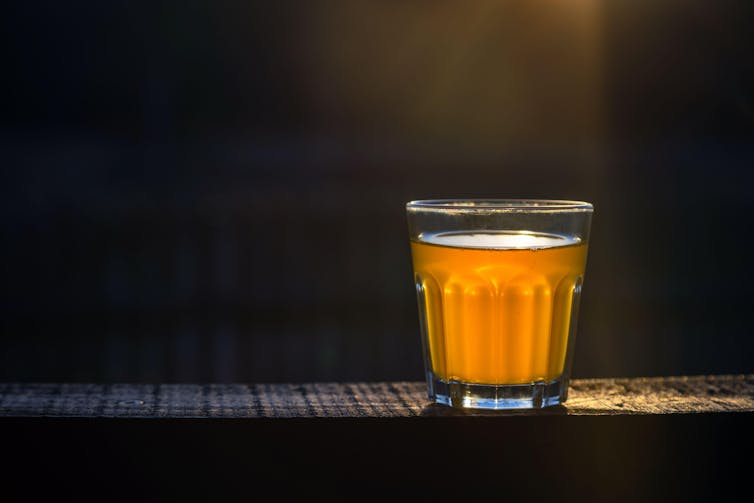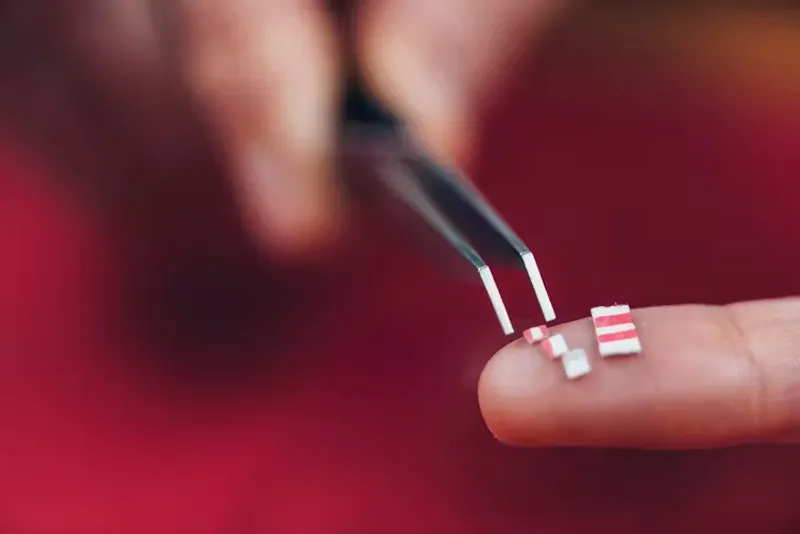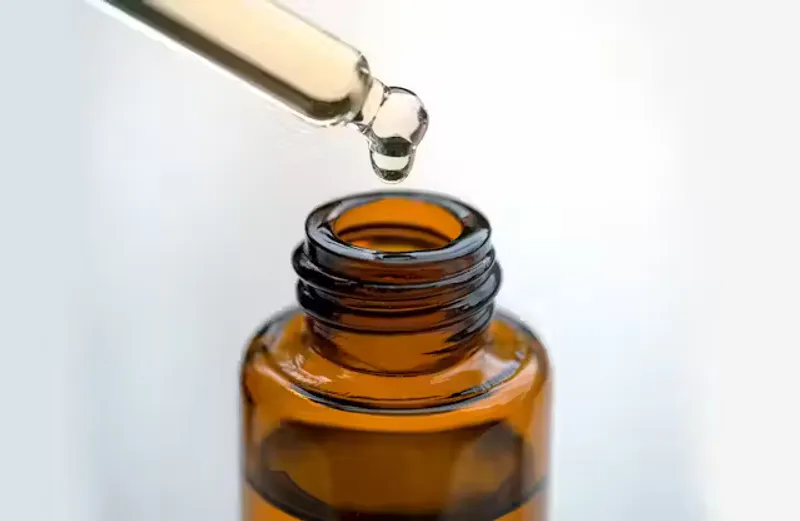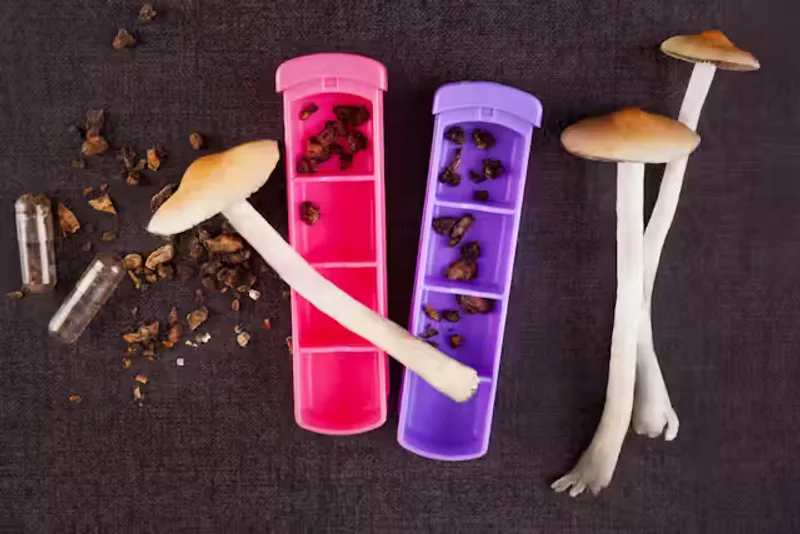
Harry Sumnall, Liverpool John Moores University
In Danish director Thomas Vinterberg’s latest film, Another Round, friends Martin, Tommy, Peter and Nikolaj agree to conduct a little experiment: they will stay moderately drunk throughout the day to see how it affects their social and professional performance.
The four middle-aged men are dissatisfied with their jobs as teachers at a gymnasium school in Copenhagen. At Nikolaj’s 40th birthday, they discuss Norwegian psychiatrist Finn Skårderud, who alleges that people have a natural alcohol deficiency, and that having a blood alcohol content of 0.05% makes you more creative and relaxed.
The band of friends embark on the experiment, recording their “findings” in an essay. The ground rules – initially – are that blood alcohol should not fall below 0.05% and drinking should only take place during work hours. The teachers cite Hemingway and Churchill as their inspirations.
“I haven’t felt this good in ages,” Martin (Mads Mikkelsen) says in the early stages of their experiment. But things don’t stay that way. Soon the men increase their dose and things get out of hand, with one of the men – Tommy (Thomas Larsen) – drinking way too much.

Another Round is undoubtedly good entertainment, but for those looking for a productivity or creativity boost, Skårderud was originally making a light-hearted (and alcohol-inspired) point that he was quick to clarify after the film’s release.
But what if you could stick to the Another Round protocol – effectively microdosing small amounts of alcohol during working hours to improve performance? What would happen?
Blood alcohol concentration is affected by many things, including the alcohol content of the drink, how fast you drink, your sex, your body mass index, and the health of your liver. But 0.05% is approximately equivalent to a 70kg man drinking one pint (568ml) of 4% beer or a large glass (250ml) of wine.
As alcohol is a toxin, the body works to excrete it via breath, sweat and urine, and so maintaining a 0.05% concentration would be difficult. It would require regular measured consumption across the day, meaning that daily and weekly unit intake would soon exceed the maximum recommended levels.
</figure>Low doses of alcohol may have some positive effects. While alcohol culture in countries like the UK can sometimes seem excessive, small amounts may increase sociability, helping people to create and maintain new friendship bonds and professional networks.
Laboratory studies have shown that at low doses the increases in relaxation and feelings of self-confidence that alcohol produce, and the loss of cognitive focus that comes with mild intoxication, may lead to more creative and diverse problem-solving strategies, improved foreign language skills, sharper memory recall, and a better ability to process some types of information. In contrast, analytical problem-solving skills, such as those needed in most workplaces, suffer across all levels of consumption.
If all this sounds good, before you think about trying this experiment yourself, remember that these were all controlled lab studies administering single doses of alcohol, and there are some questions about how relevant the tests and assessments are to the real world of work.
Also, although there is individual variation, tolerance to the psychological and physiological effects of alcohol quickly develops even at low doses, which means that over time more of the drug is needed to achieve the same effects.
Alcohol “microdosing” may become ineffective, or soon turn into alcohol “macrodosing”, with more having to be drunk to maintain even larger blood-alcohol concentrations. This is not only expensive, but most employers will have policies covering alcohol use in the workplace, with some safety-critical occupations having zero-tolerance approaches.
The harms of regular alcohol are well known. It is linked to a range of cancers, digestive diseases, and other health and social harms to both the drinker and others.
There is longstanding academic debate about whether drinking moderate amounts of alcohol is good for your health, protecting against conditions such as heart disease. Some researchers have proposed that there is a J-shaped relationship between the amount of alcohol consumed and some types of harm, whereby there is a “sweet spot” of consumption that is beneficial. But this idea is one that is often promoted by the alcohol industry for commercial benefit, and is undermined by weak evidence. However, other researchers think there is no safe level of alcohol consumption – any amount is bad for your health.
Personal enhancement through alcohol is not a new idea. The ancient Greeks notably promoted wine as an aid to debate, poetry and philosophical discussion, but perhaps wisely suggested a three-drink limit, as consuming any more meant overstepping personal capabilities.
Great figures in history – artists, writers, politicians, composers, scientists and industry leaders – have been famous tipplers. Churchill, for example, would start the day with a whisky and water, and end it with a few glasses of scotch, champagne and a highball. But the creativity and success of notable people came despite their use of alcohol. For those of us with more modest talents, alcohol use is more likely to lead to a hangover and empty wallet than professional reward.
Harry Sumnall, Professor in Substance Use, Liverpool John Moores University
This article is republished from The Conversation under a Creative Commons license. Read the original article.










